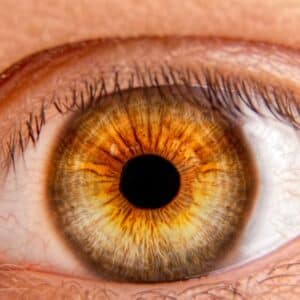Eye pain is a common complaint that can have a variety of causes, ranging from mild and temporary to serious and potentially vision-threatening. Eye pain can be described as a feeling of discomfort or pressure in the eye, and it can be accompanied by other symptoms such as redness, swelling, discharge, blurred vision, and sensitivity to light.
It is important to see your eye doctor if you are experiencing eye pain, as it can be a sign of a serious condition that requires medical attention. A doctor can help to diagnose the specific cause of your eye pain and recommend the most appropriate treatment. With proper treatment and management, it is possible to effectively control eye pain and achieve relief from discomfort and other symptoms.
Dry Eye and Allergies
Dry eye and allergies are two common conditions that can cause irritation and discomfort.
A dry eye occurs when there is a deficiency in the production or distribution of tears, which can lead to dryness, redness, and discomfort in the eyes. Various factors, including age, medications, and medical conditions, can cause dry eye. It can also result from living in a dry or windy environment or spending a lot of time in front of a computer or other screens.
Symptoms of dry eye include dryness, itching, redness, burning, and a feeling of grittiness or sand in the eyes. These symptoms can be exceptionally bothersome when reading, using a computer, or engaging in other activities that require prolonged use of the eyes.
Allergies are a common cause of eye irritation and discomfort. Allergies occur when the body’s immune system reacts to a substance it perceives as harmful, such as pollen, mold, or pet dander. This can cause itchy, red, watery eyes, sneezing, congestion, and other respiratory symptoms.
Symptoms of allergies may be seasonal, occurring only during certain times of the year when allergens are present, or they may be persistent, occurring year-round. A wide range of substances can trigger allergies, and it is essential to identify the specific allergens causing symptoms to effectively treat and manage the condition.
Both dry eye and allergies can be treated with over-the-counter or prescription eye drops, as well as lifestyle changes such as using a humidifier, wearing protective eyewear, and avoiding allergens. Additional treatment, such as medications or surgery, may be necessary in more severe cases.
See an eye doctor if you are experiencing persistent eye irritation or discomfort, as untreated eye conditions can lead to more severe problems. A doctor can help to diagnose the specific cause of your symptoms and recommend the most appropriate treatment. With the proper treatment and management, it is possible to effectively control dry eye and allergies and relieve eye irritation and discomfort.
Pink Eye and Infections.
Pink eye, also known as conjunctivitis, is a common eye condition characterized by redness, swelling, and discharge. It can affect one or both eyes and is often accompanied by other symptoms, such as itching, burning, and a feeling of grittiness or sand in the eyes.
There are several different types of pink eye, including viral, bacterial, and allergic conjunctivitis. Each type has its specific cause and treatment.
Viral conjunctivitis is caused by a virus and is highly contagious. It can be spread through contact with respiratory secretions, such as saliva or mucus, or by sharing items like towels or makeup. It is often accompanied by symptoms such as a watery discharge and redness in the whites of the eyes.
Bacterial conjunctivitis is caused by bacteria and is also highly contagious. A thicker, yellow or green discharge and redness in the whites of the eyes characterize it. It can be spread through contact with respiratory secretions or by sharing items such as towels or makeup.
An allergic reaction to a substance such as pollen, mold, or pet dander causes allergic conjunctivitis. It is characterized by redness, itching, and watery discharge in the eyes. It is not contagious.
Infections can also cause pink eye, including sexually transmitted infections such as chlamydia and gonorrhea. These conditions can cause severe complications if left untreated, and it is essential to see a doctor for proper diagnosis and treatment.
Treatment for pink eye depends on the specific cause of the condition. Viral and bacterial conjunctivitis typically resolve on their own within a few days to a week, although over-the-counter or prescription eye drops may be used to help alleviate symptoms. Allergic conjunctivitis can be treated with antihistamines and other allergy medications and by avoiding the allergens causing the reaction.
See an eye doctor if you are experiencing symptoms of pink eye, as untreated eye infections can lead to more severe problems. A doctor can help to diagnose the specific cause of your symptoms and recommend the most appropriate treatment. With proper treatment and management, it is possible to effectively control pink eye infections and achieve relief from eye irritation and discomfort.
Computer Vision Syndrome
Computer vision syndrome, also known as digital eye strain, is a condition that is caused by prolonged use of electronic devices such as computers, laptops, tablets, and smartphones. It is characterized by a range of symptoms that can affect the eyes, head, and neck, including:
- Eye strain is a feeling of fatigue or discomfort in the eyes that can be accompanied by dryness, redness, and difficulty focusing.
- Headaches: Prolonged use of electronic devices can lead to headaches, particularly in the forehead, temples, and neck.
- Neck and shoulder pain: Looking down at a device for extended periods of time can cause muscle strain and discomfort in the neck and shoulders.
- Blurred vision: Prolonged use of electronic devices can cause the eyes to become tired, leading to blurred vision.
- Dry eyes: Staring at a screen for long periods of time can cause the eyes to become dry, as the blinking reflex is reduced.
Various factors, including poor lighting, glare on the screen, poor posture, and the use of high-energy blue light-emitting screens, can cause computer vision syndrome.
To prevent computer vision syndrome, taking breaks from electronic devices every 20-30 minutes is essential, such as blinking frequently and using the 20-20-20 rule (looking at something 20 feet away for 20 seconds every 20 minutes). It is also necessary to adjust the lighting and screen settings to reduce glare and correct posture when using electronic devices. Using artificial tears or a humidifier can also help to prevent dry eyes.
If you are experiencing computer vision syndrome symptoms, it is crucial to see a doctor or eye care professional for proper diagnosis and treatment. With appropriate treatment and management, it is possible to effectively control computer vision syndrome and achieve relief from eye irritation and discomfort.
Glaucoma and Conjunctivitis
Glaucoma and conjunctivitis are different eye conditions with different causes and symptoms.
A glaucoma is a group of eye conditions that damage the optic nerve, which carries visual information from the eye to the brain. It is usually caused by high pressure in the eye, which can damage the optic nerve over time. Glaucoma can cause vision loss and blindness if left untreated, and it is often called “the silent thief of sight” because it usually has no symptoms in its early stages.
Symptoms of glaucoma may include vision loss, particularly in the peripheral (side) vision, halos around lights, and eye pain. These symptoms may occur gradually over time, and they may be accompanied by redness and swelling of the eye.
Conjunctivitis, also known as pink eye, is an inflammation of the conjunctiva, the thin, transparent layer covering the eye’s white part and the inner surface of the eyelids. Various factors, including viruses, bacteria, allergies, and infections, can cause it.
Symptoms of conjunctivitis include redness, swelling, discharge in the eye, itching, burning, and a feeling of grittiness or sand in the eyes. Conjunctivitis can affect one or both eyes and is often accompanied by other symptoms such as sneezing, congestion, and respiratory symptoms.
See an eye doctor if you are experiencing any symptoms of glaucoma or conjunctivitis, as these conditions can lead to more severe problems if left untreated. A doctor can help to diagnose the specific cause of your symptoms and recommend the most appropriate treatment. With proper treatment and management, it is possible to effectively control glaucoma and conjunctivitis and relieve eye irritation and discomfort.
Refractive Errors and Injury or Trauma to the Eye.
Refractive errors and injury or eye trauma are two conditions that can affect vision and cause eye irritation and discomfort.
Refractive errors occur when the eye cannot focus light correctly on the retina, resulting in blurred vision.
There are several different types of refractive errors, including myopia (nearsightedness), hyperopia (farsightedness), astigmatism, and presbyopia (age-related farsightedness).
Symptoms of refractive errors may include blurred vision, difficulty reading or seeing distant objects, eye strain, and headaches. These symptoms may be worse when reading, using a computer, or engaging in other activities that require prolonged use of the eyes.
Injury or trauma to the eye can also cause eye irritation and discomfort. This can occur due to various causes, including accidents, sports injuries, and physical violence. Symptoms of eye injury or trauma may include redness, swelling, and discharge in the eye, as well as pain, vision loss, and other symptoms depending on the specific cause of the injury.
Both refractive errors and injury or trauma to the eye can be treated with eyeglasses, contact lenses, or surgery, depending on the specific cause and severity of the condition. A doctor can help to diagnose the specific cause of your symptoms and recommend the most appropriate treatment.
See a doctor if you are experiencing any symptoms of eye irritation or discomfort, as these conditions can lead to more severe problems if left untreated. Proper treatment and management can effectively control refractive errors and injury or trauma to the eye and achieve relief from eye irritation and discomfort.






